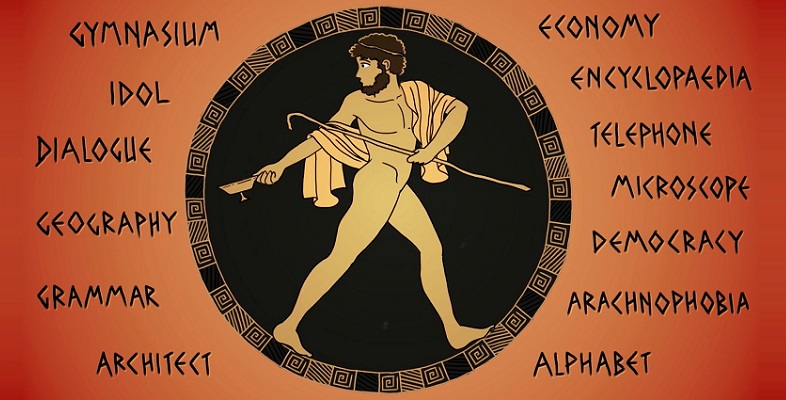6 Transliteration
There is a standard system for representing, or ‘transliterating’, Greek letters in English. A transliteration can be a useful tool in the initial stages of learning Greek, because it can confirm that you have understood each individual letter correctly.
For example:
- Ποσειδων Poseidо̄n
- λεγω legо̄ (= ‘I say’)
- σοφος sophos (= ‘wise’)
The following letters are represented in English by two letters:
- θ (theta) th
- φ (phi) ph
- χ (chi) ch
- ψ (psi) ps
The long vowels are represented by their English equivalents, ‘e’ and ‘o’ with a horizontal line above, called a macron.
- η (eta) ē
- ω (omega) о̄
Gamma is transliterated as ‘n’, when it precedes gamma, kappa, xi or chi. This reflects the way in which these combinations of letters were pronounced by the ancient Greeks:
- αγγελος angelos (= ‘messenger’)
- αγκυρα ankura (= ‘anchor’)
Upsilon can be represented as ‘u’ or ‘y’.
The transliteration of Greek names often follows a Latinised form, especially if a name is well known. Thus ‘Aeschylus’ is the usual spelling of the name of the Greek playwright, rather than the technically correct ‘Aischulos’ (Αἰσχύλος).
Activity 7 Letter counting
How many Greek letters are needed to write the following words?
- theatron (= ‘theatre’)
- philosophos (= ‘philosopher’)
- chaos (= ‘chaos’)
- psuchē (= ‘soul’, ‘mind’)
- о̄phthē (= ‘he/she was seen’)
Discussion
- Seven letters – θεατρον (theatron)
- Nine letters – φιλοσοφοϛ (philosophos)
- Four letters – χαος (chaos)
- Four letters – ψυχη (psuchē)
- Four letters – ωφθη (о̄phthē)
